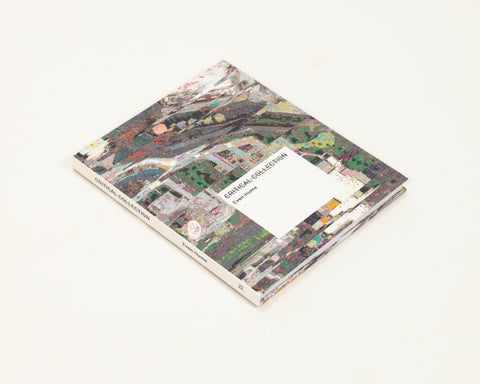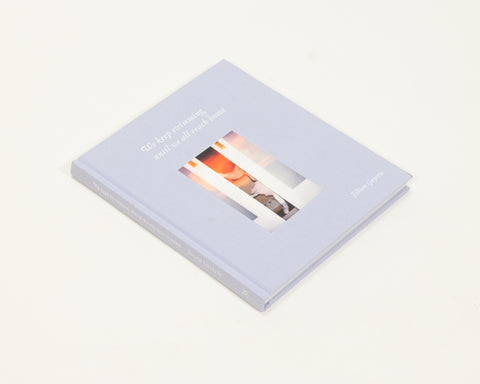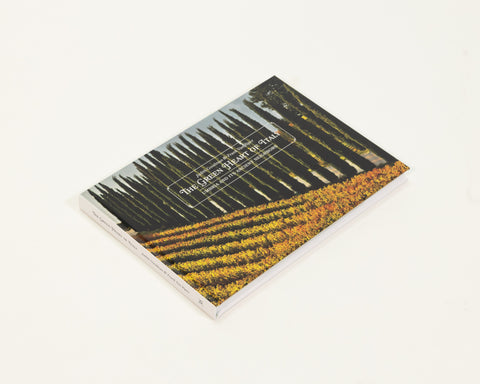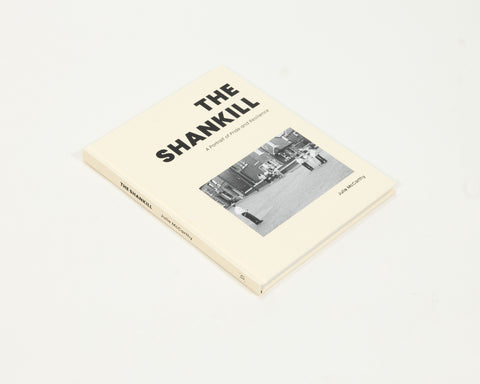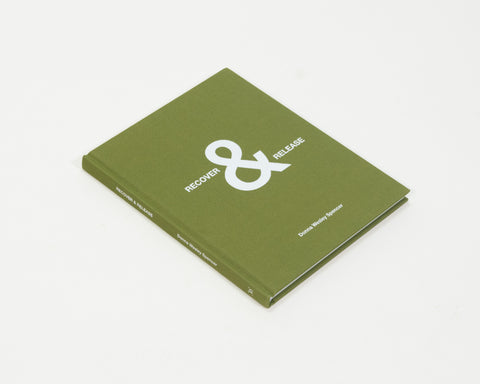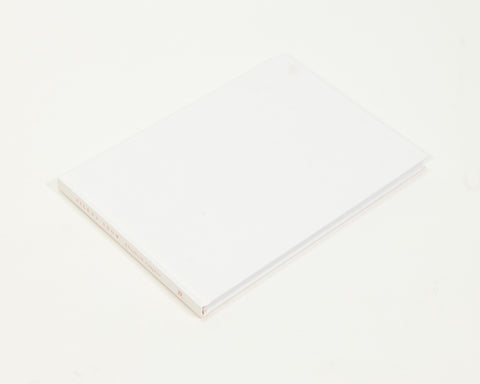“From his photographs, he learned that the appearance of the world was richer and less simple than his mind would have guessed. He discovered that his pictures could reveal not only the clarity but the obscurity of things, and that these mysterious and evasive images could also, in their own terms, seem ordered and meaningful.”
- John Szarkowski from The Photographer's Eye
North Carolina-born and New York-based photographer, Lynn Saville, is a night photographer. Saville prefers to photograph at twilight and dusk, the transitional time between day and night. If photography is an exchange of a secret between the photographer and the subject, Saville's exchange of secrets is with places often overlooked by the majority of people: driveways, barns, walkways, benches, narrow streets, garages, warehouses, and buildings with the sky as a crescendo. Things that are almost invisible during the day get their own shape and place in Saville's photographs. Saville's night vision eschews the mundane normality of the day.
Saville's black and white night photographs are gathered in Saville's first book, "Acquainted with the Night" (Rizzoli, 1997). Photos taken in various cities around the world are accompanied by selection of poems. Using black and white, Saville photographed some of the iconic buildings in New York City like the Brooklyn Bridge, Rockefeller Center, and the New York Public Library. Influenced by her childhood in Durham, North Carolina, Saville also photographed suburban landscapes of barns, trees and backyard scenes. All the photos have a poetic and melancholic quality. Saville exposes her films in order to enhance details for both shadows and highlights and she develops the prints herself to ensure perfection. The result is a vast range of tonalities.
Saville's focus shifted to industrial places and places on the brink when she shifted to color photography several years ago. Building structures, bridges, archways, metal structures, deserted factories, narrow streets, signs, and nature within the cityscape are her visual elements. Many of these places are undergoing change and Saville feels an almost urgency to photograph them before they disappear. Saville's color photographs are published in her second book, "Night/Shift" (Random House/The Monacelli Press, 2009). This book showcases her love affair with New York City and the surrounding areas. Most of the photos do not include human subjects thus creating a feeling of a deserted and abandoned arena. Even when people walk into the frame, they are dark and blurry.
In Saville's photographs, there is a balance between the seen and unseen and the clear and obscure. Mysteries and stories exist. Pictures are titled after the names of the streets and neighborhoods leaving the viewer with room to imagine the stories of each locale. Saville transforms the complex and busy cityscape into a calm and quiet – almost meditative – nightscape.

Ed’s Barn, 1998
You are famous for your night photography. Why do you have such an affinity for the nighttime?
The night intrigues me on many levels. It’s not really about charm. I appreciate the mysterious spaces created by the illumination of architecture and urban public places and their sources of light. At night, these places are filled with perceptual ambiguities created by deep shadows, light, and blurred outlines. In photography, there is a dislocation between the subject and its normal context. I shoot in twilight most of the time because most of my images have the sky and building in them. If there is no contrast between the sky and the building, it becomes dull and loses depth. During the twilight, the sky and architecture separate from each other and there are interesting details showing on a roof. I don’t want to miss these details. I respond to the mystery of night, to its beauty and its sublime qualities. I like the visual aspect of darkness and artificial light sources. As a photographer, I work the night shift, the time of transition from daylight to night. During this liminal period, natural light gives way to streetlight, moonlight, window light, and advertisement and surveillance lighting. The workday crowds ebb, and the city’s avenues, bridges, parks, and buildings begin to resemble a giant set, a theatrical approximation of a city. Paradoxically, it is only during these moments of dereliction that we can begin to populate the metropolis with our own dreams and fantasies.
You photograph from high vantage points many times like from a building roof.
The city looks abstract and fascinating when I look from a very high point. It looks abstract and very different from the daytime. When I see cars on the street, it is irritating, but when I look down from a high place, they look so cute. The city with rivers and street lights looks very beautiful. When I look at passing by cars, I sometimes say to myself, “Stop. Stop.” When the car really stops, it makes it all the more interesting.

Rockefeller Center, 1993
What are the childhood memories that have affected your photography?
I spent my childhood in Durham, North Carolina where I was born. My father and my brother were avid amateur photographers. I think what initially got me going as a photographer was I used to love to look out the back window of my bedroom. We used to live in a house in a suburban area where there were a lot of woods behind the house. At night when the porch light reflection on to the trees in the back made everything so mysterious, scary and interesting. It was kind of boring during the daytime but at night it was full of surprises for me.
Both of my parents taught at the Duke University in Durham. We would get in the car and go over to the Duke swimming pool in the summer. I would sit in the back seat and I could see the trees along Anderson Street becoming lighted by the artificial streetlights. I thought that was special and magic thing. That image stayed in my mind for a long time.
Through my parents' Sabbaticals, we lived in Italy three times when I was five, ten, and fifteen. We lived in Rome, Turin, and Florence, one year in each city. The experience of living there was important to my artistic development. I really appreciated trees, plazas and public spaces in Rome, arcades in Turin, and rivers and bridges in Florence. I saw a lot of art and that has really formed my work. We spent entire summers in a house by a lake in Northern Vermont. We took a lot of drives and hikes. I really love the kind of spirit of rural America as well as urban America.

Awnings and Light, Rialto Bridge, 2001
Your major was not photography at Duke University. How did you start photography?
I majored in Anthropology and minored in Art History. At my father's suggestion, I took one photography course during my last semester there. I had a very strict German professor. He would yell at me if I went to the dry side of the darkroom with wet hands. I didn't think I would become a photographer back then. After I graduated from Duke, I went to New York. When my family went to Vermont or Europe, we passed through New York. Since a young age, I dreamed to live in New York. I took some fashion, color theory, photography and art history classes at Pratt Institute. Later I was recruited by the photography department there. Phillip Perkis and Arthur Freed recommended me to apply for the MFA program in photography. They were both very good at helping students finding sources of their works in themselves.
How did the experience at Pratt affect your photography?
It was a turning point for me. I started to understand how much art there is in photography. I realized that photography was the medium that was communicating with me. At Pratt, I bonded with a lot of other students in a way that I hadn't connected to people anywhere else. I was influenced by classes other than photography classes. I took a course with a sculptor, Calvin Albert. He taught a great drawing class for people from all media. Usually nude models posed and we would draw. One day he just put one light on the model creating a chiaroscuro lighting effect. He said, "Cover your charcoal paper with black and then erase to get the image." By doing that, it taught me how to see black and white printing. I didn't understand zone system very well but after I took Mr. Albert's drawing class, I attained instant recognition of tonal ranges. I am so grateful to him.

Riverside Park Fog, 1995
Your black and white photographs have very good tonal ranges and they are well printed. Needless to say it is important to get a proper exposure at the time of shooting. What is your know-how from exposure to printing to get your beautiful prints?
When I first started working with twilight at night, I would work mostly in Black and White. My inspiration for tonality was from Edgar Degas, the painter who did wonderful monotypes. His monotypes have chiaroscuro. Even of a dancer standing some place, there are rich blacks to the highlights. It is very beautiful when there is a little bit of the detail in the shadow and highlight. There is texture even in very brightest highlights. I try to expose for the shadow area and then under develop my film little bit to maintain details in both shadow and highlights. I print mostly myself but if I have to hire a printer, I stay with the printer to collaborate. With color photographs, there are complex light sources that make it harder to print.

Long Island City, 2007
You have been working with color for few years. What are the differences between working with black and white versus color?
I think it is easier to focus on one or the other so I am primarily shooting in color right now. I feel little bit more contemporary with color and started seeing more in color. I wouldn't rule out shooting in black and white. Sometimes the image seems to render itself in black and white. If there aren't a lot of colors or the kind of color that isn't something appealing to me, I will do black and white. Interestingly subjects have been changed for my color works. With black and white, I was focused more on iconic places such as Brooklyn Bridge and Rockefeller Center. With color, these places appear like postcards. I had to move away from a classic view of the city. I started appreciating areas that show dynamic changes. I feel an almost sense of urgency about it because I love New York. I will embrace the changes but there were times when I saw my favorite places getting demolished and becoming very clean and corporate. I want to show these places that are on the verge of changing. One of the things I like about the city is the rough edges where you see weeds, little construction sites, orange cones or kind of in between cracks. Everything is not seamed perfect. My fear is the New York City will be seamless. It is kind of intuitive angst that I have so I love to find these places.

Pepsi Cola Sign, 2008
You teach a “New York at Twilight” workshop at ICP and NYU. How did you start and what is it about?
I invented the “New York at Twilight” workshop 5 or 6 years ago. At ICP, it is a 5-week course and at NYU, it is an 8-week course. We go photographing around different parts of New York and students show their work in class for critiques. Most time students use tripod with long exposures and they seem to quickly learn the techniques of overcoming the problems like noise and flare. The curriculum consists of more outings than class time. I ask students to bring small prints so we can look at them on locations. If it is too bright during twilight – early part of the evening – then we can go to a café and look at the photos. People teach each other. I like the connection to the students and I formed some nice long-term friendships to some of my students. It is really nice to have a connection to a group of photography-oriented people. I find it very enriching. In the summer, students come from different states and countries, age range from teens to 70s. It is a great experience for me to meet with this diverse group of people and get to know them.

Mike Cathy, 2008
You published a photography book with a selection of poems by your poet husband. How was the process of making the book?
My first book is called “Acquainted with the Night” (Rizzoli, 1997). I had an exhibition at the Columbia School of Architecture and through the curator I was introduced to an editor at Rizzoli. I presented a book proposal and soon after I got a contract. When I went to see the editor for the first time, he asked about my husband. I told him that my husband is a poet. The editor suggested doing a book with selections of poems made by my husband. He said, “Night photographs in black and white have a feeling of meditation so poems would suit well with your photographs.” I called my husband from the editor’s office and he gladly accepted the proposal. We really had a good time doing it.
One of the best parts was sequencing the pictures. I printed images in 4”x6” size. I have a whole lot of prints and we just didn’t have enough space in the apartment. So we decided to go away for a romantic weekend. We were lucky because they gave us a room with two big beds with a white cover on them. We put the ‘Do not disturb’ sign on the door and started laying out these little pictures all around the beds. The best way to sequence was looking at pictures upside down. Shapes went together and pictures didn’t need to be sequenced by place. We decided to do it in visual and it really worked well. My husband reads a lot and he has an amazing memory and he loves poetry. He was very quick on selecting poems to accompany my pictures. We didn’t want the picture to illustrate the poem or the poem to be a verbal version of the picture. We wanted it to be conversational. It wasn’t one to one. A lot of pictures don’t have poems by them.

Central Park Trees, 2008
Your photographs were exhibited as part of the Public Art Program in 2006 and 2007.
Public art has a concept of offering art in public space so that the public can enjoy the art at no cost. In New York City, the MTA offers public art through its program called MTA Arts for Transit. One day, the curator at MTA Arts for Transit called me. He honored me by requesting a proposal for specific subway stations. I was stationed at Bryant Park Station because I already had a lot of photographs from the area. Images were printed on transparent material called Duratrans and placed with backlit lighting. Seven of my images were exhibited for 1 ½ year as lightbox installations. It was at least 6 feet tall. I love the experience working on public art because tons of people walk by there. I met people I’ve never met before.

Red Rock West, 2002
In 2007, you had two exhibitions in museums. How were the exhibitions at museums different from the exhibitions at galleries?
It was a very different experience from galleries. There was a long lead-time like a year or two. In 2007, I had an exhibition at the Pensacola Art Museum in Pensacola, Florida and the Mint Museum in Charlotte, North Carolina. The Mint Museum is well-respected museum and after me, William Eggleston’s exhibition was scheduled. The Mint Museum showed my work before the Pensacola Art Museum. After Pensacola, the show traveled to Cleveland and then to Montgomery. Museums don’t sell photos. There are a lot of educational outreach effects in museums I found very exciting. They asked me to address to docents and they were very sophisticated. I was impressed by their effort to connect to the public. Museums hold pictures for a longer time. Museums also have bigger spaces in general so I was able to exhibit bigger sizes in more complete series. I showed 38 photos in 20”x24” at Pensacola.

Red Hook, 2008
Your second monograph of color photography entitled "Night/Shift" was published in this May. What is the central theme of the book and what compelled you
to publish it?
The title is Night/Shift symbolizes a shift of light from night to day and my switching to color. It is all color photography book with an introduction by a well-known art critic, Arthur C. Danto. The book consists of 85 color photographs taken in off-beat areas of the greater New York area. The places are ambiguous, transitional zones I journeyed to like building sites in Queens and broken sidewalks and abandoned buildings under the Brooklyn Bridge. I love the marriage of color and vernacular architecture. I am attracted to these transitional zones that I like to photograph during the transition times of twilight and dawn. An urgency to photograph the city in this moment: shifting from industrial to post industrial, becoming more residential; the shift from day to night and the sublime combination of urban structures, geography, traces of the past blended with the present. It's fascinating to see these places that are so often forgotten and unloved presented together here in one volume. This is a testament to the unique urban quality of New York at a particular time of day.
I had heard that Random House had acquired Monacelli Press. I felt this was a good combination of a fine art press with a major international publisher. I originally brought to the publisher a selection of photographs including some taken in London, Los Angeles, and other cities. But the critical mass of the project was in the greater New York area that includes all the areas of New York City plus a few from the Meadowlands in New Jersey. A friend of mine, Robert A Schaefer, sequenced the book.

Number 39, 2006
To learn more about Lynn Saville’s works, visit her website at www.lynnsaville.com.
Lynn Saville’s color work Night/Shift will be exhibited at following venues:
Yancey Richardson Gallery at 535 West 22nd Street 3rd Fl., NY, NY (July 9 - August 28, 2009)
Gallery Kayafas at 450 Harrison Avenue, #37, Boston, MA (September 10 - October 17, 2009)
- opening book signing on September 12th
- book signing on the occasion of the “First Friday” on October 2nd
Kopeikin Gallery at 8810 Melrose Avenue, West Hollywood, CA (Dates to be determined)
All images © Lynn Saville. B images are all Gelatin Silver Prints and color images are all C-Prints.
